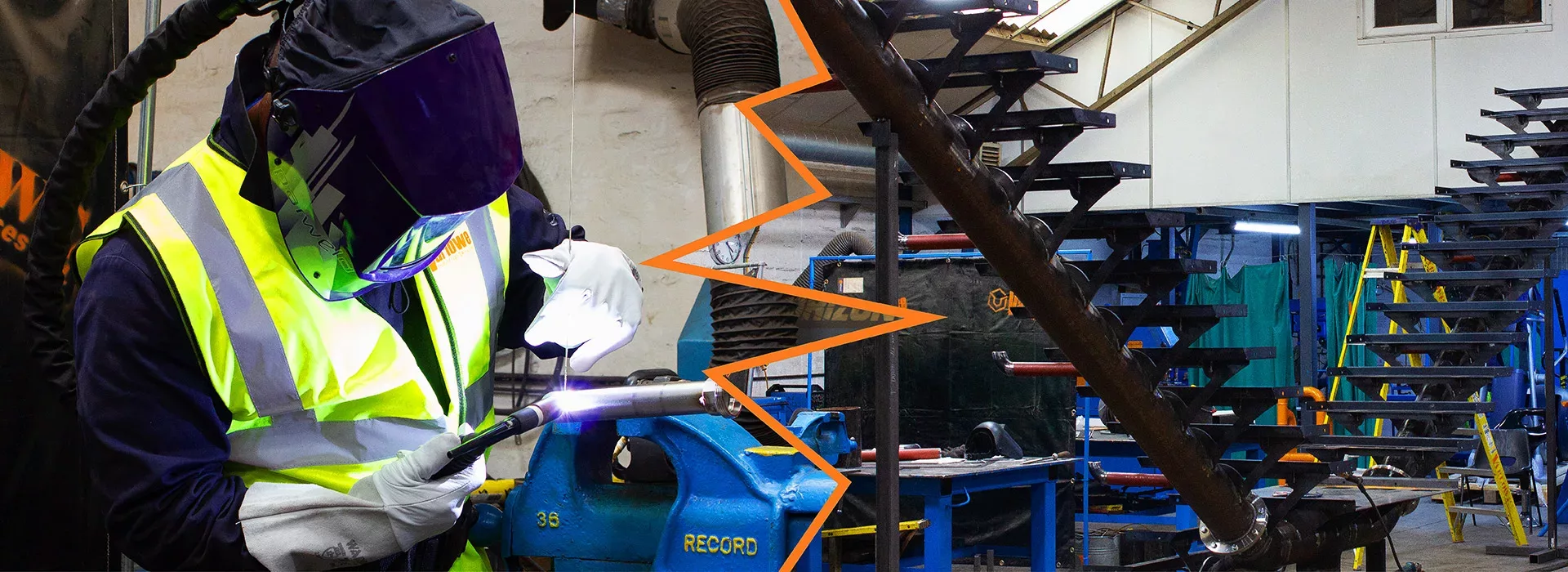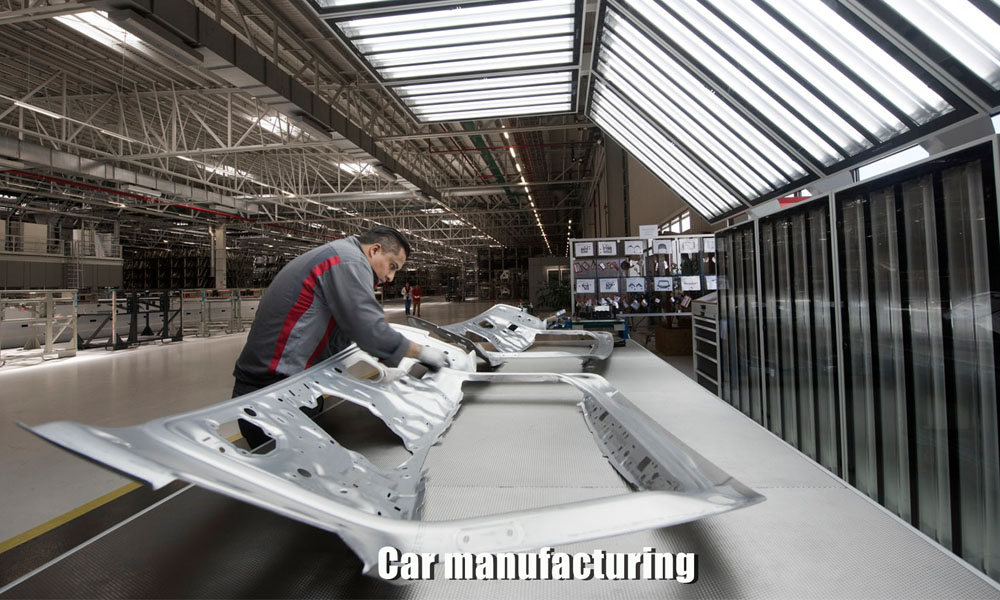A quick guide about overheating prevention from Montana Mobile Welding and Repair
Wiki Article
All Concerning Welding: Trick Insights Into Techniques and Best Practices for Success
Welding incorporates a selection of methods, each fit for specific products and applications. Recognizing these approaches, such as GMAW, SMAW, and TIG, is crucial for attaining perfect results. The right equipment and safety techniques can not be overlooked. As preparation and troubleshooting play crucial duties in the welding process, mastering these components can significantly boost the high quality of the end product. What are the key aspects that assure an effective weld?Recognizing Different Welding Strategies
Welding strategies include a range of methods, each fit to particular applications and materials. Among the most common techniques are Gas Steel Arc Welding (GMAW), Protected Steel Arc Welding (SMAW), and Tungsten Inert Gas Welding (TIG) GMAW, additionally understood as MIG welding, is prominent for its rate and adaptability, making it excellent for thin products. SMAW, or stick welding, is preferred for its simplicity and effectiveness in exterior atmospheres, especially with thicker steels. TIG welding supplies accuracy and control, making it appropriate for detailed work and non-ferrous steels (Belgrade Fabrication). Each method has its special benefits and factors to consider, allowing welders to choose the most effective method based on the task's requirements, product kind, and wanted end results. Comprehending these strategies is essential for successful weldingVital Welding Tools and Tools
While different welding techniques require specific skills, the ideal tools and tools are similarly necessary for attaining top quality results. Essential welding tools consists of welding machines, which differ depending upon the technique-- such as MIG, TIG, or stick welding. Protective equipment, consisting of handwear covers, aprons, and safety helmets, warranties safety and comfort throughout the process. On top of that, fixtures and clamps help safeguard products in position, ensuring precision in welds. Consumables like welding rods, cable, and shielding gas are likewise vital components that influence the top quality of the weld. Moreover, tools such as grinders and cutters facilitate surface area preparation and post-weld ending up, adding to a professional result. Buying high-grade devices ultimately enhances the efficiency and efficiency of welding jobs.Security Practices in Welding
Correct safety and security practices are vital in the welding sector to safeguard workers from potential dangers. Welders must wear ideal individual protective devices (PPE), including headgears with correct shading, gloves, and flame-resistant clothes. Appropriate air flow is essential to minimize exposure to unsafe fumes and gases created during the welding procedure. Additionally, employees need to be educated in the right handling of welding equipment to prevent mishaps. Fire precaution, such as maintaining flammable products away from the welding area and having fire extinguishers conveniently available, are essential. Routine assessments of devices and workspaces can aid recognize possible risks before they lead to crashes. By adhering to these safety and security methods, welders can develop a much safer working setting and lessen threats connected with their profession.Preparing Products for Welding
Preparing products for welding is an essential action that significantly affects the high quality and honesty of the last item (Montana Mobile Welding and Repair Fabrication). Proper preparation entails cleaning the surfaces to remove contaminants such as rust, oil, and dirt, which can jeopardize the weld. Strategies such as grinding, fining sand, or utilizing solvents are frequently used to achieve a tidy surface. Additionally, making certain that the products fit with each other well is vital; spaces can lead to weak welds. It's additionally crucial to take into consideration the alignment and positioning of the elements, as this will certainly influence the ease of welding and the last outcome. Selecting the appropriate filler material and ensuring compatibility with the base steels is important for accomplishing strong, durable welds.Tips for Achieving High-Quality Welds
Attaining high-grade welds needs attention to detail and adherence to best techniques throughout the welding procedure. Proper joint preparation is vital, guaranteeing surface areas are totally free and tidy from contaminants. Picking the appropriate filler product and welding technique based upon the base metals is crucial for ideal bonding. Keeping regular travel speed and angle while welding can promote and avoid issues harmony. Additionally, look at this website managing heat input is vital; too much warm can lead to bending and damaged joints. If required, routinely evaluating the welds throughout the process enables for immediate changes. Lastly, using appropriate post-weld treatments, such as cleansing and tension relief, can boost the durability and integrity of the weld, inevitably guaranteeing an effective end result.Repairing Usual Welding Issues
Welding often presents obstacles that can affect the high quality and stability of the final item. Common problems such as porosity, irregular weld beads, and getting too hot can develop, each requiring particular repairing methods. Comprehending these issues is important for welders to improve their abilities and accomplish perfect outcomes.Porosity Troubles Described
Porosity can commonly be ignored, it stays a critical concern in welding that can compromise the honesty of an ended up item. Porosity describes the existence of little gas pockets within the weld bead, which can damage the joint and lead to premature failing. This issue generally emerges from impurities, wetness, or inappropriate shielding gas coverage throughout the welding procedure. To minimize porosity, welders ought to verify that the base materials are completely dry and clean, utilize suitable protecting gases, and preserve constant welding criteria. Consistently checking the tools and setting can also aid identify prospective issues prior to they show up in the weld. Addressing porosity successfully is crucial for achieving solid, sturdy welds that fulfill top quality criteria.
Inconsistent Weld Beads
Irregular weld beads can considerably influence the high quality and strength of a finished product. Numerous variables add to this issue, including inappropriate traveling speed, incorrect amperage setups, and irregular electrode angles. When the welder relocates also quickly, a bead might show up slim and lack penetration, while moving too slowly can trigger excessive buildup. In addition, utilizing the incorrect amperage can result in either damaging or extreme spatter, both of which concession weld integrity. The welder's strategy, such as inconsistent lantern activity, can also result in irregular bead look. To minimize these problems, welders must concentrate on keeping stable, controlled movements and making sure proper devices setups to accomplish uniformity in their welds. Uniformity is essential to achieving reputable and solid welds.Overheating and Bending Issues
Too much heat throughout the welding process can lead to considerable getting too hot and contorting issues, affecting the structural integrity of the work surface. These problems frequently materialize as distortion, which can endanger placement and fit-up, making more setting up testing. Aspects contributing to overheating include the option of welding criteria, such as voltage and take a trip speed, along with the type of product being bonded. To alleviate these issues, welders should maintain constant traveling speed and proper warm input while keeping an eye on the workpiece temperature. Additionally, pre-heating or post-weld warm treatment can assist reduce stress and anxieties brought on by fast cooling - Belgrade Fabrication. Regular evaluation and adherence to best techniques are necessary in stopping getting too hot and making sure the long life and dependability of welded frameworksFrequently Asked Questions
click for infoWhat Are the Occupation Opportunities in the Welding Industry?
The welding sector uses varied profession chances, consisting of positions as welders, designers, educators, and examiners. Specialists can function in manufacturing, building, aerospace, and automobile sectors, profiting from strong demand and affordable salaries in different duties.Exactly How Can I Enhance My Welding Rate Without Giving Up Quality?
To improve welding rate without compromising high quality, one should exercise effective strategies, keep devices, maximize setups, and improve hand-eye coordination. Routine training and seeking feedback can additionally substantially add to accomplishing faster, premium welds.What Accreditations Are Readily Available for Welders?
Numerous certifications exist for welders, consisting of those from the American Welding Culture (AWS), the National Facility for Building Education and Research (NCCER), and various industry-specific companies. These qualifications enhance employability and show skill effectiveness.How Does Welding Affect the Properties of Metals?
Welding influences the properties of steels that site by modifying their microstructure, which can lead to changes in stamina, solidity, and ductility. Warm input and cooling rates throughout the process significantly impact these material qualities.Can I Bonded Dissimilar Metals Together?

Report this wiki page